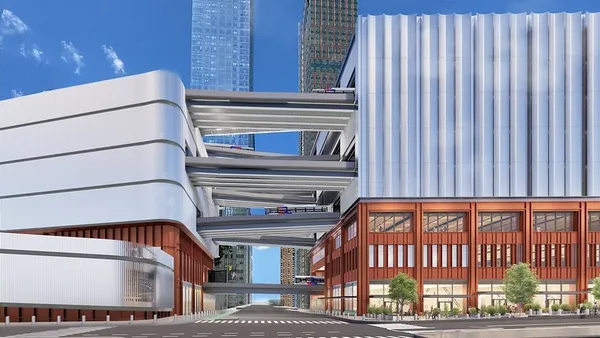Dive Brief:
- States, local governments, tribes and territories can begin applying on Oct. 16 for two of the federal government’s most significant climate resilience grant programs, the Federal Emergency Management Agency announced on Thursday. Applications close Feb. 29, 2024.
- Communities can access $1 billion for projects through the annual Building Resilient Infrastructure and Communities program — less than half the nearly $2.3 billion available through BRIC last year. The Flood Mitigation Assistance program will provide projects with a total of $800 million, the same amount as last year.
- Amid concerns that some communities struggle to access federal climate resilience funding, FEMA made what it called “key changes” this year to lower the financial and administrative burden on certain applicants. FEMA is also providing an additional $112 million for building code improvements nationwide.
Dive Insight:
Both the BRIC and FMA programs look to harden communities against future disasters, from floods to extreme heat and earthquakes. This becomes even more urgent as communities worldwide stare down worsening climate change, which makes many types of extreme weather events more frequent and severe.
The grants are competitive, however, which means not every community that wants the funds gets them. Project selections are often skewed toward communities that already have more resources, particularly key local government positions and expertise, according to a recent analysis from nonprofit research group Headwaters Economics.
FEMA seems attuned to such concerns with the recent changes to the climate resilience programs announced Thursday. The federal government will take on up to 90% of project costs in disadvantaged communities, including those designated by FEMA last month as “community disaster resilience zones.”
Also, less-than-$1 million projects will be allowed to skip a full benefit-cost analysis, which the agency said “is often a hurdle for communities,” and instead submit a “narrative that describes cost effectiveness.” FEMA will assist certain communities with benefit-cost analysis if needed.
The agency also plans to expand direct technical assistance for BRIC to at least 80 more communities, on top of the 74 that can already receive the three years of non-financial support to successfully apply for resilience funding.
The BRIC program is providing much less funding this year compared to 2022 because in May FEMA ended all COVID-19 disaster declaration incident periods, said FEMA Press Secretary Jeremy Edwards in an email. These disaster declarations were previously active in every state and D.C., as well as five territories and three tribal nations. FEMA sets aside a portion of money for BRIC based on assistance it provides after major disaster declarations, which is why the program’s funds have dwindled now that the disaster declaration incident periods have officially ended.
“However, the amount of money provided to BRIC and FMA has increased because of the Bipartisan Infrastructure Law,” Edwards said.
Editor’s note: This story has been updated to include comments from FEMA Press Secretary Jeremy Edwards.











